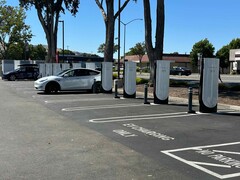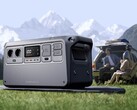The term PM2.5 refers to particulate matter 2.5 micrometers in diameter or smaller. Both PM2.5 and PM10 are known to have adverse effects on health, while PM2.5 is still more deadly as it penetrates deeper into the human body.
The California Air Resources Board conducted a study and found that children living in areas with high levels of PM2.5 had slower lung growth. At age 18, they also had smaller lungs compared to their counterparts in areas with lower levels of PM2.5. In addition, PM2.5 contributes to about 2,800 hospitalizations for cardiovascular and respiratory diseases, and about 6,700 emergency room visits for asthma each year in California. There are other negative health effects also attributed to PM2.5.
The recent study by some UCLA researchers measured daily PM2.5 concentrations at 7.2 to 39 micrograms per cubic meter in direct current fast-charging EV stations. These numbers are significantly higher than what was found in urban areas without these charging stations — 3.6 to 12.4 micrograms per cubic meter.
To ensure a well-grounded study, the researchers measured air quality in urban sites like gas stations, not just residential areas. They also measured the air quality across 50 EV charging station in 47 cities within Los Angeles County.
The researchers found that PM2.5 concentrations around power cabinets exceeded 300 micrograms per cubic meter at their peak. This suggests that the power cabinets — the equipment responsible for converting alternating current to direct current in level 3 chargers — were the primary source of emissions. Since level 1 and level 2 EV chargers use AC charging, they don't need power cabinets like level 3 chargers do, which means less PM2.5 pollution.

























